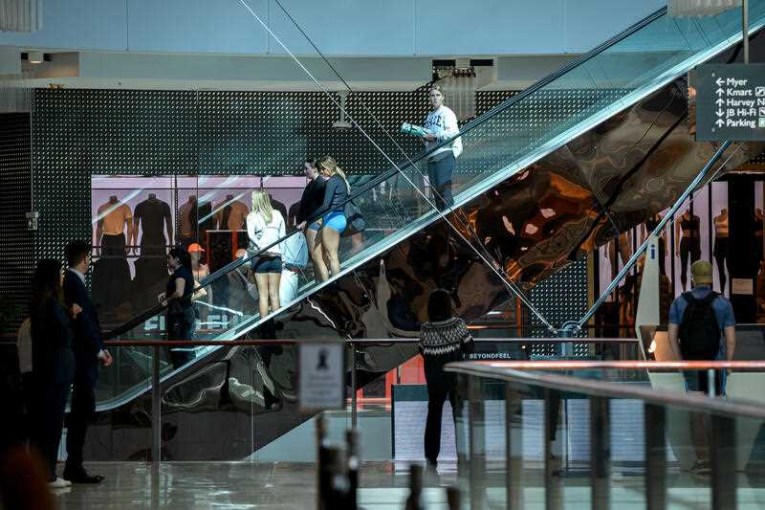‘Reality check’ as global warming tipped to reach 1.5 degrees in 2030s
Global warming is on track to hit 1.5 degrees in the early 2030s and the world needs to slam on the fossil fuel brakes to limit the damage.
The United Nations’ Intergovernmental Panel on Climate Change has delivered a “reality check” about what the world is doing to itself.
Even under a best-case scenario, global warming of at least 1.5 degrees above pre-industrial levels is anticipated within 20 years.
Climate scientists expect 1.5 degrees to be reached early next decade.
The IPCC’s Valérie Masson-Delmotte labelled the panel’s sixth assessment a “reality check”.
#ClimateChange is widespread, rapid, & intensifying – #IPCC
Scientists are observing changes in the Earth’s climate in every region & across the whole climate system, says the IPCC’s latest #ClimateReport, released today.
➡️ https://t.co/4t8uyqoLXN
➡️ https://t.co/uU8bb4inBB pic.twitter.com/e3oAgQJQWe— IPCC (@IPCC_CH) August 9, 2021
The worst of five scenarios modelled shows 1.6 degrees of warming within 20 years and a planet that’s 4.4 degrees hotter by the end of the century.
Australian climate scientist and report author Blair Trewin said the world was seeing conditions “outside the range of human experience”.
“The climate system is in a state that it has not been for at least centuries to millennia and changing at a rate unprecedented at least for the last 2000 years,” he said on Monday.
Without immediate, rapid and large-scale reductions, it would not be possible to limit warming to close to 1.5 degrees or even 2 degrees.
Many changes, especially when it came to the ocean, ice sheets and global sea level, were already locked in and irreversible for centuries or even millennia.
But CSIRO scientist and fellow report author Pep Canadell said the world still had a chance to determine its long-term climate future.
“We may not be [in control] any more over the next few decades, but we’re still in control about where we want to take the future of this planet,” he said.
It was less of a cliff than a slippery slope.
“We try to slam the brakes as hard as we can. And every decimal of a degree that we are avoiding, it is a win for us and a win for the planet,” Dr Canadell said.
“But the important thing to understand is that there’s no bottom end … to how much damage we can create.”
A best-case scenario was in line with 1.6 degrees of warming between 2041 and 2060.
Under this trajectory, warming would then dip back below 1.5 degrees by the century’s end.
Other scenarios had the planet on track for between 1.8 degrees and 3.6 degrees of warming by 2081 and 2100, depending on the rate of greenhouse gas emissions pumped into the atmosphere.
The #IPCC #ClimateReport shows #climatechange is now affecting every continent, region and ocean on Earth, write the report’s authors for @ConversationEDU. https://t.co/jsrGadjPgz
— CSIRO (@CSIRO) August 9, 2021
Human activity had already caused about 1.1 degrees of warming compared with pre-industrial levels.
Greenhouse gas emissions were in concentrations not seen for at least 800,000 years.
The global sea level had risen 20 centimetres already and was on track for an additional increase of between 30 centimetres and a metre or more by 2100.
In Australia, land temperatures were about 1.4 degrees warmer.
Weather extremes such as fires, floods, droughts, cyclones and coral bleaching had increased, intensified and would continue to do so.
Australia remains uncommitted to achieving net-zero emissions by 2050.
The Morrison government has repeatedly said it wants to reach this as soon as possible and preferably by that time.
KEY FINDINGS
- Global warming is on track to reach 1.5 degrees above pre-industrial levels by the early 2030s
- About 41 per cent of all CO2 emitted since the Industrial Revolution is from the past 30 years
- Greenhouse gas emissions are responsible for about 1.1 degrees of warming since between 1850 and 1900
- Greenhouse gas levels are higher than they have been in the past 800,000 years
- It is unequivocal that human activity has warmed the atmosphere, land and ocean
- The best-case of five global emissions scenarios equals 1.6 degrees of warming within 20 years, dropping to below 1.5 degrees by the end of the century
- The worst-case scenario shows likely warming of 4.4 degrees by 2100
- Climate change will bring more intense rainfall, flooding and sea level rise will continue
- Further warming will amplify permafrost thawing, the loss of seasonal snow cover, ocean acidification, and ice sheet and glacier melt
- The Arctic is warming faster than any other part of the world
- Globally, the sea level has already increased by 20cm
- It’s on track to increase by another 30cm to one metre, or more, by the end of the century depending on future emissions.
WHAT’S HAPPENING IN AUSTRALIA?
- Land areas have already warmed by about 1.4 degrees
- Under an intermediate emissions scenario, excessive temperature thresholds of 40 degrees are expected to increase between 100 and 200 per cent by the century’s end
- Ongoing drying in southern Australia is set to intensify for every degree of global warming
- This would be countered by heavy rainfalls during extreme weather
- Fire weather is expected to become more intense, frequent and longer
- Marine heatwaves, ocean acidification, heat extremes are expected to increase
- Cold extremes, snow cover and depth are expected to decrease.
(Source: United Nations Intergovernmental Panel on Climate Change)
-AAP








